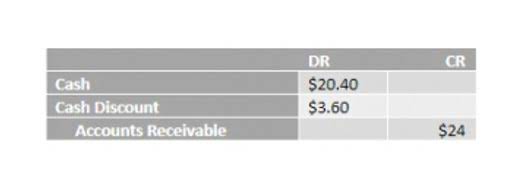Content

Now that we have looked at how to prepare a reconciliation, the purpose of the reconciliation should be quite obvious. The purpose is to ensure that the balance in a company’s cash account matches that in the company’s bank account after all necessary adjustments have been made to each. This ensures that any errors in either account are detected and gives an added sense of comfort in the reliability and accuracy of accounting records. Was it to make sure that you didn’t make any mistakes when you were adding deposits or subtracting expenses? I bet it was because you wanted to make sure that your balance in your checkbook was the same as the balance in the bank, right? Everything that we just talked about refers to what we in accounting commonly call doing a bank reconciliation.
- You need to subtract both checks from your bank balance, as well as any other checks listed in your check register that haven’t cleared.
- Ideally, you should reconcile your books of accounts with your bank account each time you receive the statement from your bank.
- This happens due to the time lag between when your business deposits cash or a cheque into its bank account and when your bank credits the same.
- The bank is correct most of the time, but will occasionally make a mistake.
- Notice that the bank reconciliation form above still does not balance, even after including the outstanding checks.
Whether this is a smart decision depends on the volume of transactions and your level of patience. For example, a restaurant or a busy retail store both process a lot of transactions and take in a lot of cash. They might reconcile on a daily basis to make sure everything matches and all cash receipts hit the bank account. On the other hand, a small online store—one that https://www.bookstime.com/ has days when there are no new transactions at all—could reconcile on a weekly or monthly basis. Thanks to bank reconciliation you can have a clear insight of the financial health of your company. Company A paid $3,750 worth of checks into its bank account and debited its cash book accordingly, but the bank has not yet credited the funds to the depositor’s account.
Step 1: Prepare your reconciliation form
There’s nothing harmful about outstanding checks/withdrawals or outstanding deposits/receipts, so long as you keep track of them. Bank reconciliations are like a fail-safe for making sure your accounts receivable never get out of control. And if you’re consistently seeing a discrepancy in accounts receivable between your https://www.bookstime.com/articles/preparing-a-bank-reconciliation balance sheet and your bank, you know you have a deeper issue to fix. Hopefully you never lose any sleep worrying about fraud—but reconciling bank statements is one way you can make sure it isn’t happening. As you can see, bank reconciliation, while not mandatory, is highly recommended for businesses of all sizes.
The reconciled and adjusted cash book balance is reported in a company’s financial statements. Company A noted an ending balance of US$500,000 in its records, but its bank statement revealed an ending balance of US$540,000. Hence, Company A was able to make the necessary adjustments to its records by adding back the missing deposit and recording the cheque as an outstanding one. – Once all the necessary adjustments have been made, the final cash balance on the bank reconciliation statement of an entity ought to be equal to the ending balance of the same entity’s bank account.
Step #3: Work Out the Balance as Per Cash Book Side of the Bank Reconciliation Statement
Once you’ve figured out the reasons why your bank statement and your accounting records don’t match up, you need to record them. The balance recorded in your books (again, the cash account) and the balance in your bank account will rarely ever be exactly the same, even if you keep meticulous books. We’ll go over each step of the bank reconciliation process in more detail, but first—are your books up to date? If you’ve fallen behind on your bookkeeping, use our catch up bookkeeping guide to get back on track (or hire us to do your catch up bookkeeping for you).
Most companies use checking accounts to handle their cash transactions. The company deposits its cash receipts in a bank checking account and writes checks to pay its bills. Keep in mind, a bank account is an asset to the company BUT to the bank your account is a liability because the bank owes the money in your bank account to you. For this reason, in your bank account, deposits are credits (remember, liabilities increase with a credit) and checks and other reductions are debits (liabilities decrease with a debit). Adjust the balance on the bank statements to the corrected balance.
To detect bank errors
Section A is where you calculate what your bank account balance from your own financial database. Section B is where you list the differences between the transactions appearing on your bank statement and the transactions appearing on your cash journals. Incorrectly recording transactions in the accounting system can result in errors in the balance sheet and bank statement, making it challenging to reconcile. They are helpful when reconciling accounts to print statements, clearing errors, etc. They can also be helpful when reconciling accounts for pulling reports.Another example would be where you deposit cash, but the teller doesn’t post it correctly.
At the bottom of your spreadsheet for February, add this note, tracking changes to your balance. Harold Averkamp (CPA, MBA) has worked as a university accounting instructor, accountant, and consultant for more than 25 years. He is the sole author of all the materials on AccountingCoach.com. NSF fee for the rejected dishonored check of $10 charged by the bank.









